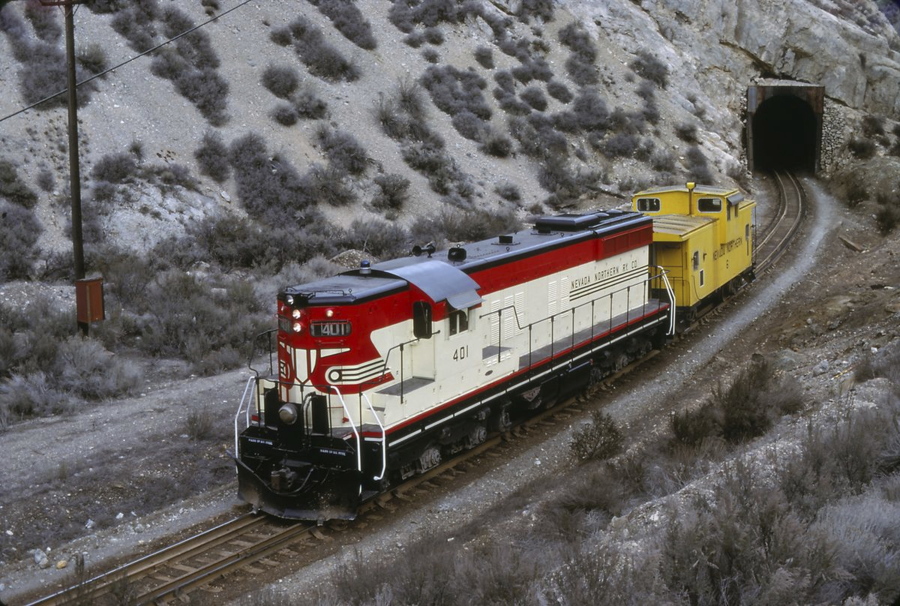RENO, Nev. — Two historic locomotives that were part of the pioneering shift from steam-powered to diesel-electric trains in the mid-1900s are coming back to their home in a northeast Nevada rail yard.
Built in 1951, Locomotive 201 is the last survivor among 38 experimental models manufactured by the American Locomotive Company. It is scheduled to be loaded onto a truck Nov. 2 at the Northwest Railway Museum in Snoqualmie, where it still sometimes pulls excursion trains on the museum’s Snoqualmie Valley Railroad.
The truck hauling the 286,000-pound engine will take four or five days at a top speed of about 35 mph to make the 900-mile trip back to Ely at the Nevada Northern Railway Museum near the Nevada-Utah line, railway president Mark Bassett said.
Details are still pending for the return from Delta, Utah of the No. 401, the first special duty model General Motors built in 1952 in its Electro-Motive Division.
It was the only one painted in the “Desert War Bonnet” scheme, a cream, scarlet and black design that remains on it today. It became known as the “Last Empress of Ely.”
“These both are one-of-a-kind locomotives,” Bassett said. “Both have a story to tell and they are both tied into the early days of dieselization of the Nevada Northern Railway.”
The railway purchased both in the 1950s and used them primarily to haul copper to smelters in Nevada, Idaho and Utah until the railroad shut down in 1983. The museum plans to restore each and eventually return them to operation for tour rides.
The diesel-electric locomotive offered many advantages over its steam-powered counterpart, Bassett said. It needed less maintenance, used less fuel and could be operated with a smaller crew. It also didn’t require expensive support structures like roundhouses, cooling towers and water tanks.
After World War II, the “dieselization” of American railroads was rapid. Of the 21,000 new locomotives bought between 1945 and 1955, fully 95 percent were diesel-electric, the Henry Ford Museum in Dearborn, Mich., says on its website.
Bassett, the head of the museum in Ely, is leading the $350,000 fundraising effort to cover the cost of the return of the locomotives and their restoration. He lives in Ely across the street from the depot in the general manager’s house that was built by the railroad in 1923.
“It’s quite frankly unheard of to be bringing them back home at about the same time to their home where they worked from the 1950s to the 1980s,” Basset said in a telephone interview. “Any other locomotive (that old) would have been cut up and scrapped by now and turned into razor blades.”
No. 401 was nearly lost in a roundhouse fire in Cobre north of West Wendover near the Utah line in 1952.
Railway general superintendent Harold M. Peterson wrote in his autobiography that he was awakened by a phone call at about 1 a.m. from a South Pacific Railroad dispatcher who said the engine was still inside the roundhouse as the fire raged. It was about three hours later when he finally got word that an engineer, Jumbo Labate, had come to the rescue.
The dispatcher “reported the locomotive had been safely moved out of the fire, but the roundhouse was completely gone. Jumbo Labate had opened the big doors of the roundhouse, got up in the engine, started it and backed out of the roundhouse before the roof fell in,” Peterson wrote.



